Pivot Shuttle AM v2
Wheel Size: 29”
Travel: 150 mm rear / 160 mm Front
Geometry Highlights:
- Sizes offered: S, M, L, XL
- Headtube angle: 64.1° (Low) / 64.5º (High)
- Seat tube angle: 76.4° (Low) / 76.8º (High)
- Reach: 476 mm (Low) / 480 mm (High) (Size Large)
- Chainstay length: 444 mm (all sizes)
Drive System Highlights:
- Motor: Bosch Performance Line CX / CX Race Limited Edition
- Torque: 100 Nm
- Assist percentage: 400%
- Battery: 800 Wh
- Display: Bosch Kiox 400c /Bosch Smart System Top Tube Control Center
Material: Carbon Fiber
Price: Complete bikes $8,499 to $16,598

Intro
Pivot just launched a new version of the Shuttle AM, featuring new colors, build kits, the latest Bosch Gen 5 CX and CX-R drive systems, as well as the new Bosch Kiox 400C display on certain build kits.
We spent several months aboard the Shuttle AM v1 and weighed in with our Full Review later on in this post. Check out our video review for the quick rundown, and then read on for our Full Review and Deep Dive comparisons. But first, let’s get into all that’s new with the Shuttle AM v2:
The Frame
The Shuttle AM frame bears a close resemblance to the frame of its big brother, the Shuttle LT. Many of the design elements of the Shuttle LT are present, such as the vertical shock placement, low standover height, and tube shape. The Shuttle AM, however, has a tidier aesthetic, due to the tighter packaging of the shock and drive system — the Shuttle LT is a good-looking frame with great lines, but I think the Shuttle AM has it beat.
The Shuttle AM has 150 mm of DW-Link suspension travel that can be managed by either air or coil shocks. Pivot states that an optimal amount of anti-squat has been implemented to work in concert with the power delivery of the drive system; they also claim the kinematics have been tuned to provide enough platform to offer a lively and efficient feel, and ample progression to handle rowdier terrain. Like the Shuttle LT, the Shuttle AM also incorporates a flip chip to adjust the bottom bracket height. Swapping from Low to High raises the Bottom Bracket by 5 mm and steepens the seat and head angles by 0.4 degrees. Pivot states that the flip chip also makes the Shuttle AM mixed-wheel-size compatible, though they don’t publish a geometry chart for that configuration.
The Shuttle AM uses an identical frame across the three build levels, which accommodates multiple battery sizes (more on those options in a minute). While the battery is removable (and the different size options can be interchanged) it’s not an especially quick process; the batteries aren’t meant to be removable for the purposes of dropping in a freshly charged one. While the frame is unchanged between builds, it is unique for each size, since Pivot changes the carbon layup and tube thickness per size to achieve their preferred balance of flex and stiffness.
The frame has room for a full-size water bottle, and Pivot collaborated with Topeak to integrate an on-the-bike tool storage system, which mounts the tools under the top tube. Rear wheel spacing is Pivot’s preferred 157 mm Super Boost and the Shuttle AM has a Universal Derailleur Hanger. Frame protection looks good with a thick pad in front of the motor and protection on both the seatstays and chainstays.
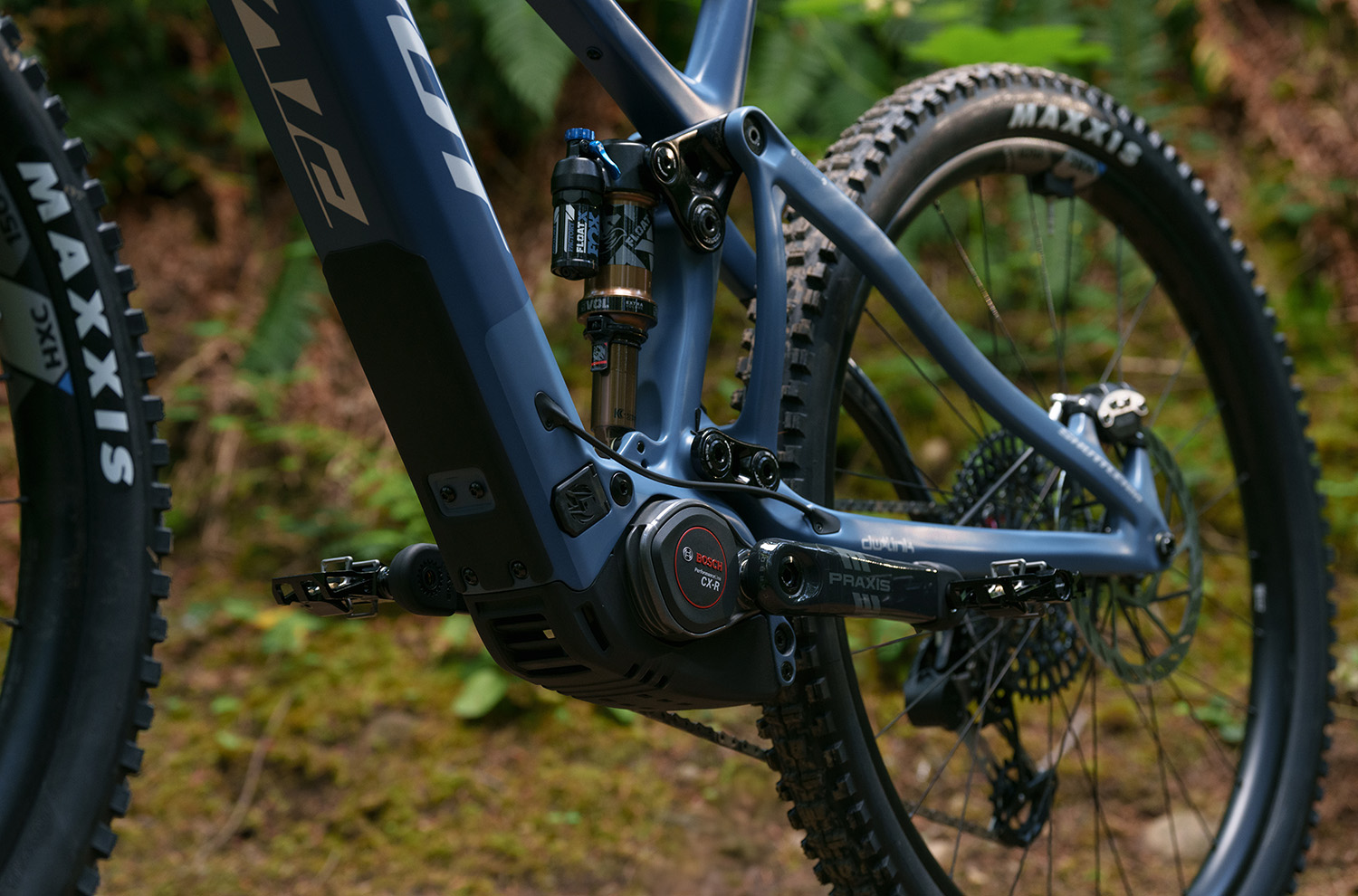
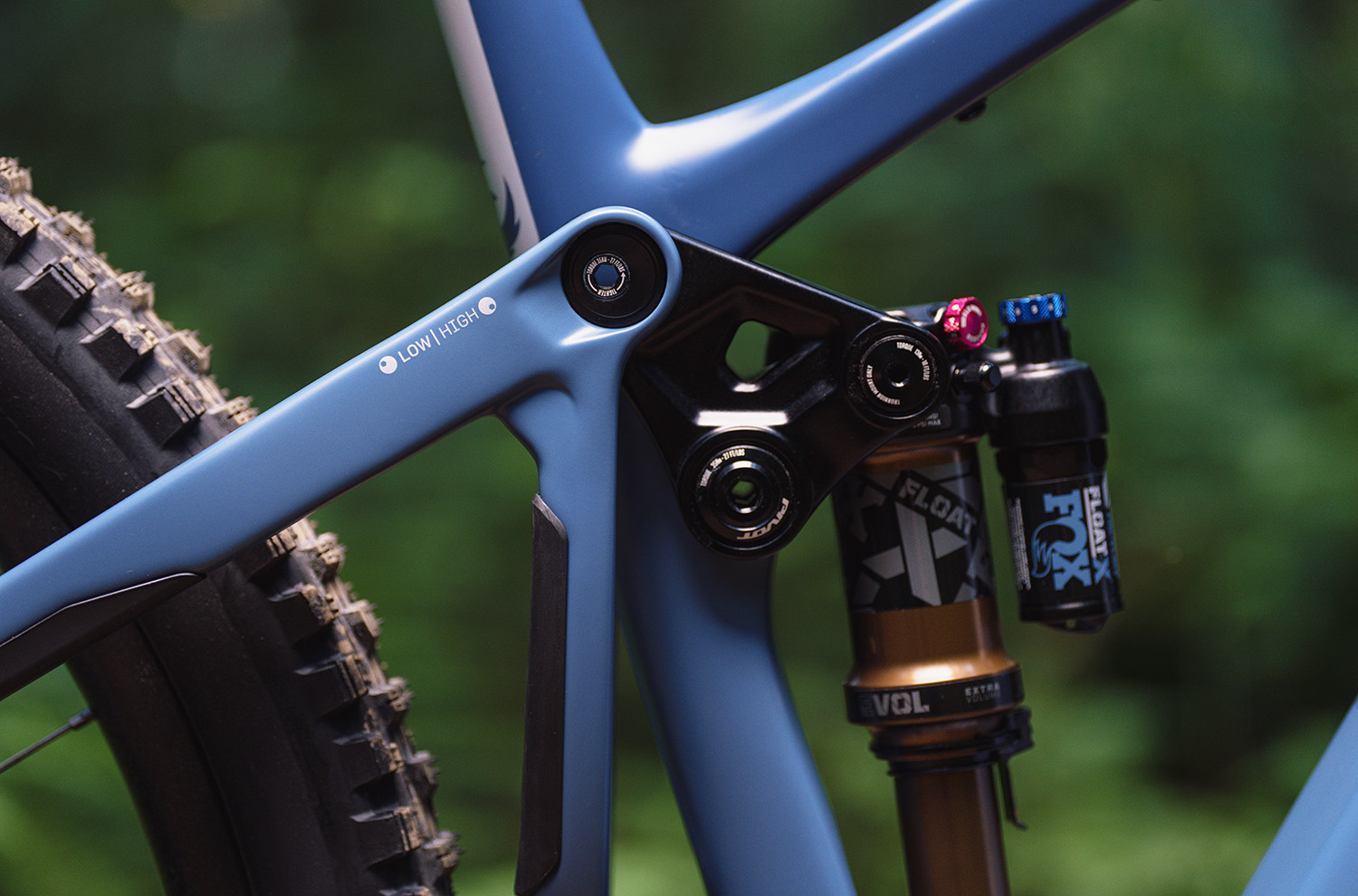
Drive System
Pivot continued its partnership with Bosch for the Shuttle AM’s drive system, featuring two motor options. The “Ride” builds get the Performance Line CX motor. It delivers up to 750 watts and 100 Nm of torque, and it delivers that torque in a punchy manner — the Extended Boost feature, which keeps the power on after you stop pedaling, encourages lots of power-assisted wheelies.
All other builds of the Shuttle AM take it to the next level with the Bosch Gen 5 Performance Line CX Race Edition motor. The Race motor offers the same watt and torque numbers as standard CX, but the Race motor uses lighter components and also adds on a “Race” assist level, which Bosch claims allows you to accelerate faster and also reach top speed faster. Reaching top speed faster may seem like a given since it accelerates faster, but the programming on non-Race motors also tapers power as it reaches the top assist speed (20 mph), whereas the Race motor pulls right up to the limit with no tapering. Race mode also has Extended Boost, which is where the motor continues to supply power after the rider stops pedaling (also commonly called over-run). Non-Race-motor-equipped bikes also have Extended Boost, but Race mode lengthens the distance the power stays on — Bosch is very clear in their description of Race mode in that it requires experience and skill to manage.
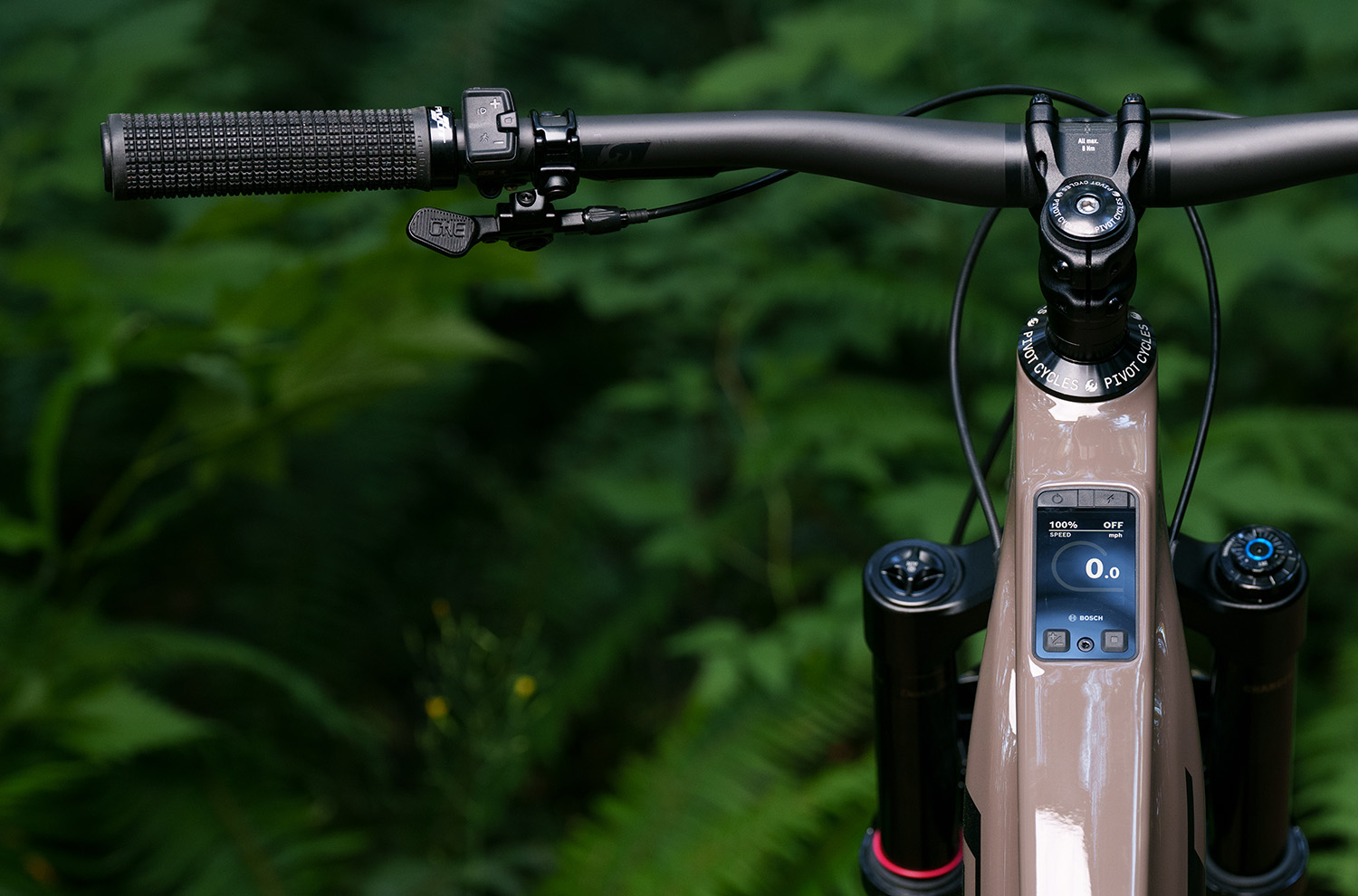
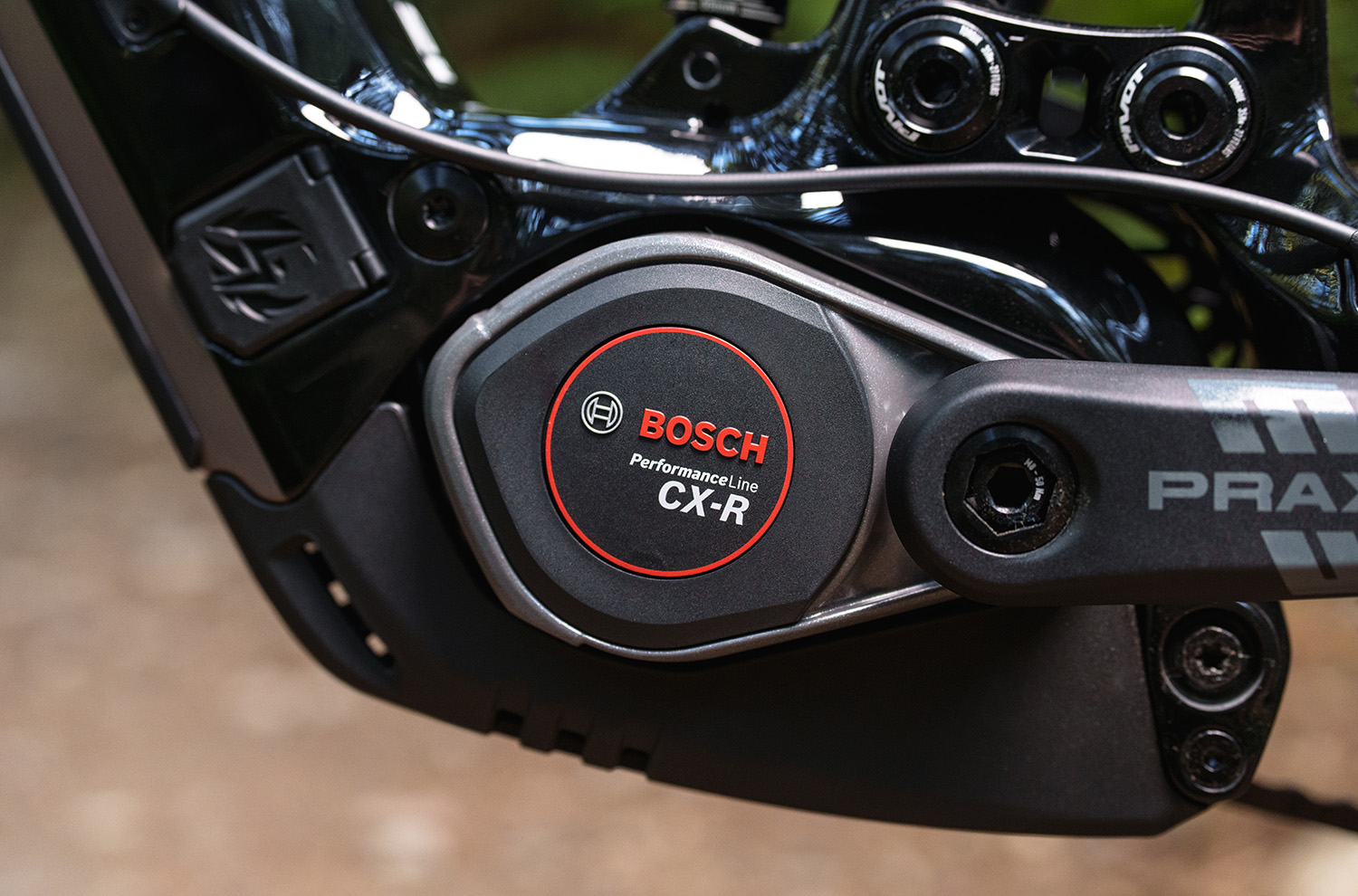
In the battery department, Pivot has spec’d all builds with an 800 Wh battery. We’ve had plenty of time on bikes equipped with Bosch’s 750 Wh battery to form a very positive opinion, and are starting to spend time on the latest, largest 800 Wh option. As mentioned in the Frame section, the Shuttle AM’s frame (all sizes) is compatible with Bosch’s Powermore range extender, which adds 250 Wh of battery capacity.

The top six out of eight builds come equipped with Bosch’s new integrated Kiox 400C top tube display. The Kioc 400C (C standing for “color”) display has several different pages that give loads of information. Not only is the battery percentage number displayed at the top of every page, but this new display also gives you information like rider watts, cadence, ride distance, ride time, max speed, and more. It also features a navigation page that, when paired with the Bosch eBike Flow app, can display real-time, turn-by-turn navigation. Additionally, this system features a USB-C charging port, capable of powering up smaller devices such as a phone.
The Shuttle AM v1, as well as the “Ride” builds of the Shuttle AM v2, features Bosch’s simpler Smart System Control Center top tube display. This display uses 5 LED bars to represent the bike’s power level, with a blue bar signifying 20% battery, and a white one signifying 10%. Bosch’s eBike Flow app bridges the gap to add more detailed information than the Smart System Control Center. It connects wirelessly to the bike via Bluetooth, and once paired, displays a custom Pivot interface that has all the information the top-tube-mounted display lacked, plus a whole lot more.
With either display, you can choose 4 of the available 9 or 10 riding modes (with the CX-R motors having the extra “Race” mode) within the Flow app, and you can also customize each assist level to tailor it to your own preferences. It’s worth mentioning that both CX and CX-R motors can provide up to 400% assist, 750 watts, and 100 nm of torque, but you must increase these metrics within the app to access these extra levels. The Flow app also features over-the-air update capability, maps, ride statistics, and a locking feature, which, once turned on, uses your smartphone as a virtual key, with the bike’s drive system automatically locked in the off position when you walk away from the bike, and unlocked once you (and your phone) are back in range.
Fit & Geometry
Geometry on the Shuttle AM v2 is unchanged from the Shuttle AM v1. It’s still offered in four sizes, labeled Small, Medium, Large, and XL. All sizes feature low standover heights, designed around the concept that the rider can choose their size based more on riding style than actual rider proportions. Whether Pivot was satisfied enough with the Shuttle AM v1’s geometry to keep it unchanged for the v2, or they wanted to save some cost by keeping things the same, is unknown. But, either way, we’re not complaining, as we enjoyed the fit and geometry of the original Shuttle AM as well as the Shuttle SL/AM, which features nearly identical geometry as well, with the addition of an XS size on the SL/AM.
The Builds
Pivot offers the Shuttle AM v2 in effectively three different build levels, with add-ons at each level, creating a total of eight build kits to choose from. The Shuttle AM v2’s builds range from $8,499 to a whopping $16,598. Essentially, there is a “Ride,” “Pro,” and “Team” level, with range extender add-ons at each level, as well as a Fox Neo Live electric suspension option at the “Team” level. Full build kit details are below:
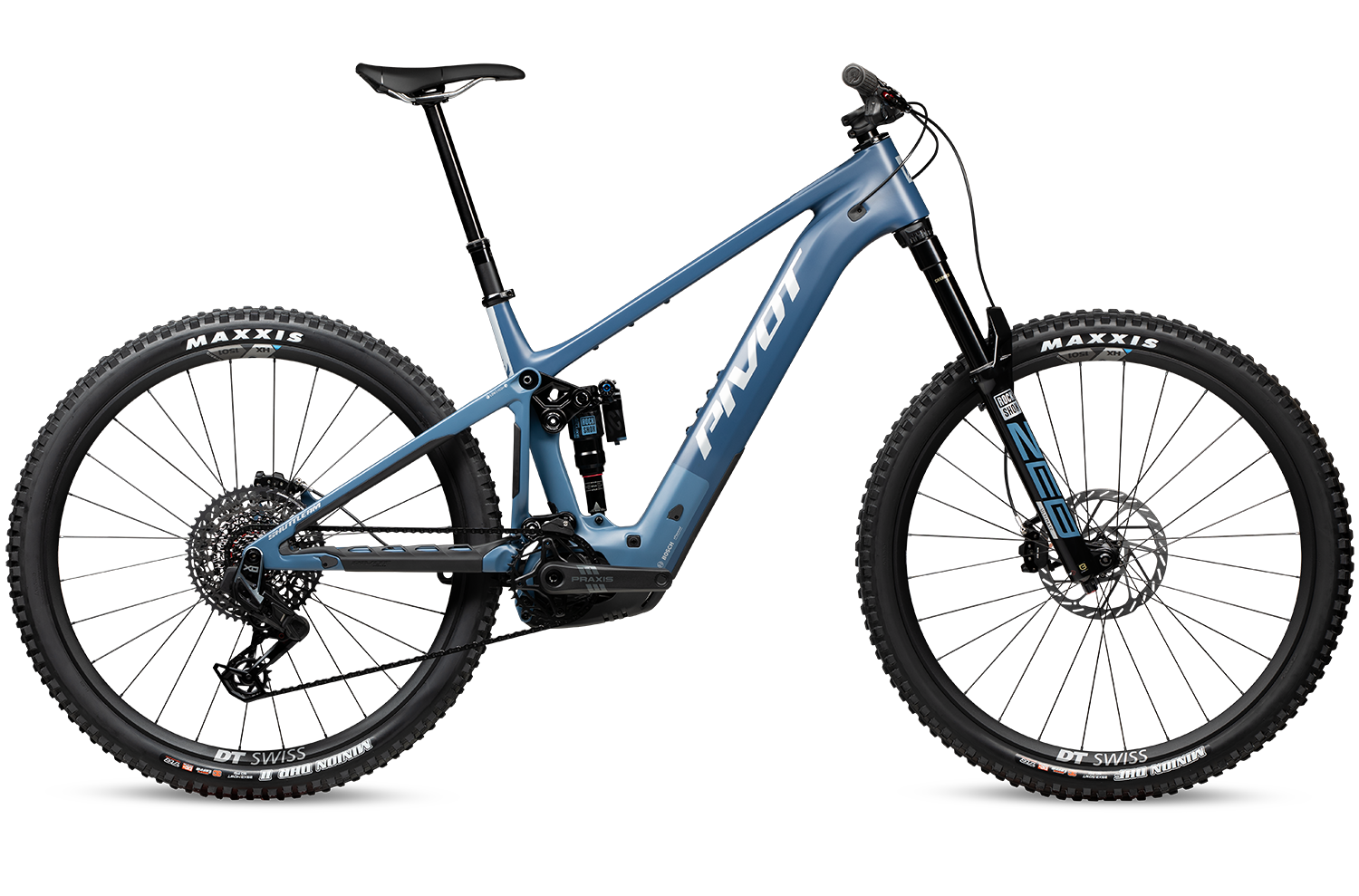
- Drivetrain: SRAM Eagle 70/90 Transmission
- Motor: Bosch Gen 5 Performance Line CX
- Battery: 800 Wh (add the Bosch Powermore 250 Range Extender for $599)
- Fork: RockShox Lyrik Select+ (160 mm)
- Shock: RockShox Super Deluxe Select
- Brakes: SRAM DB8 Stealth 4-piston (200 mm rotors)
- Wheels: DT Swiss E532, 30mm
- Dropper Post: TranzX YSP23GLS, (SM: 130-150 mm, MD: 150-170 mm, LG/XL: 180-200 mm)
- Drivetrain: SRAM X0 Eagle Transmission
- Motor: Bosch Gen 5 Performance Line CX Race Edition
- Battery: 800 Wh (add the Bosch Powermore 250 Range Extender for $599)
- Fork: RockShox Zeb Ultimate (160 mm)
- Shock: RockShox Super Deluxe Ultimate
- Brakes: Sram Maven Silver (200 mm rotors)
- Wheels: DT Swiss HX1501
- Dropper Post: OneUp Dropper V3 (SM: 150 mm, MD: 180 mm, LG-XL: 210 mm)
- Drivetrain: SRAM XX Eagle Transmission
- Motor: Bosch Gen 5 Performance Line CX Race Edition
- Battery: 800 Wh (add the Bosch Powermore 250 Range Extender for $599)
- Fork: Fox Factory 36 GRIP X2 (160 mm, add Fox Neo Live damping for $1,50o)
- Shock: Fox Float X Factory (add Fox Neo Live damping for $1,50o)
- Brakes: SRAM Maven Ultimate (200 mm rotors)
- Wheels: DT Swiss HXC1501
- Dropper Post: OneUp Dropper V3 (SM: 150 mm, MD: 180 mm, LG-XL: 210 mm)
Some Questions / Things We’re Curious About
(1) Without any updates in geometry over the Shuttle AM v1, will the v2 still feel modern and relevant in a few years?
(2) Will the 6.7% battery increase result in substantial increase in range, and just how far can you go on 1050 Wh of battery? (we’re talking about the 800 Wh battery paired with Bosch’s Powermore range extender)
FULL REVIEW
The following is our Full Review of the Shuttle AM v1 that we posted in May of 2024. Given that the updates for the Shuttle AM v2 are just motor software and build kits, we expect this review to remain fully relevant and will update some sections when needed. You can read our thoughts on the Gen 5 CX motor here, and we’re currently testing Bosch’s new 800 Wh motor on a couple of other eMTBs and will publish our thoughts as soon as we can.
Early eMTBs focused on the Enduro segment, but not everyone wants to ride a long-travel eMTB all the time, and bike brands have recognized that. These days, there are tons of more Trail-focused full-power eMTBs available from a lot of different brands. Pivot was an early player in that category (with the original Shuttle), and its replacement, the Shuttle AM, is still meant to be a versatile take on the shorter-travel full-power Trail segment. When the Shuttle AM debuted last year, I have to admit that I was a wee bit skeptical, largely as a result of putting lots of miles on the excellent longer-travel Shuttle LT (among many other longer-travel eMTBs), and never really ending a ride wishing they had less travel. But I was game to see if the Shuttle AM could change my mind about eMTB suspension travel for all-around use.
Fit & Sizing
Simon Stewart (6’, 170 lbs / 183 cm, 77 kg): The unusual sizing of the Shuttle LT put me on a size Medium instead of my normal Large, but Pivot has given the Shuttle AM more conventional sizing. I had no question that a size Large was the right call for me, and Pivot’s sizing chart agrees — I’m squarely in the middle of the band for the size Large and outside the overlapping regions for the Medium and XL. In the low position of the flip chip, the reach lands right at 476 mm, which is right in my preferred range. I like my stack height nice and high, and 651 mm makes me happy. (And I’m feeling strangely vindicated by Dakota Norton’s crazy 75 mm rise handlebars on his Mondraker DH bike.) The combination of spot-on reach and the high stack height meant that I didn’t need to do any parts swapping to dial in the cockpit.
I would’ve preferred a longer travel seat post (more detail on that in the Build section), and I thought about trimming the bars down to 780 mm but decided to leave them at 800 mm. I’m all for brands spec’ing wider bars so they can be cut down to suit individual tastes — I just decided to try them wide to start with and then ended up liking how they felt.
Climbing
I wrote in our Flash review that the Shuttle AM feels more athletic and lighter on its feet than most longer-travel eMTBs, like the Shuttle LT, Orbea Wild, or Devinci E-Troy. The more miles I put on it the more it cemented that feeling — the Shuttle AM is decidedly more nimble and snappier feeling than those sorts of bigger bikes. I think the shorter travel and more compact geometry can take a lot of the credit — the weight difference between the Shuttle AM and a lot of those other bikes isn’t huge. Going to a lighter weight fork (Fox 36 vs 38) and making a few other build spec tweaks doesn’t hurt, but a lot of the Shuttle AM’s energetic feel stems from the livelier rear suspension.

It always seems a bit off to talk about an eMTB’s climbing efficiency given that you’ve got a motor to help out, but the thing is, it still does matter. The suspension has to manage the motor’s output as well as the rider’s, after all. The Shuttle AM stays beautifully composed when climbing steep janky terrain, and the suspension stays active without feeling mushy or lacking in support. The smooth power delivery of the Bosch drive unit doesn’t hurt, either.
On the geometry side, it helps that the Shuttle AM is damn near a perfect fit for me, too. All the numbers are pretty much ideal for my proportions and preferences. I’ve never felt like I have to exaggerate my body position to help reign in the front end or to improve traction. That’s allowed me to remain in a centered position while climbing, which also helps me stay poised to quickly adapt to different trail features.
Compared to the Shuttle LT with the Fox 38, the front end of the Shuttle AM is noticeably lighter and easier to lift onto ledges. This is most apparent when, for whatever reason (e.g., pedal clearance), you aren’t able to initiate a powered wheel lift.
The Shuttle AM is a treat to climb on. It has plenty of easy to control power on tap, suspension that manages both the trail and power exceptionally well, and just about the perfect fit and geometry (for me).
Descending
I was expecting the Shuttle AM to give up some ground to burlier long-travel eMTBs when descending really rough terrain, and it does, but the gap is much smaller than I thought it would be. And what the Shuttle AM gives up in terms of carrying speed on that sort of challenging terrain, is in my opinion, somewhat made up for by its maneuverability. If there was a side-by-side comparison down the same descent, I think you would see the Shuttle AM make up time in slower speed tight technical areas where it can take advantage of its agility — but then the Shuttle LT would open up a gap during high speed super chunky sections where the extra rear travel and Fox 38 make it easier to carry speed.
Fit and geometry attributes, like the centered riding position, that benefitted the Shuttle AM when climbing, also play a positive role when descending. On game-on descents, the Shuttle AM holds its own fairly well compared to longer travel eMTBs, but it is a different experience. The Shuttle AM does require that you pay more attention to line selection when things get rowdy, but because it is so maneuverable and light on its feet, quick line changes aren’t a problem.
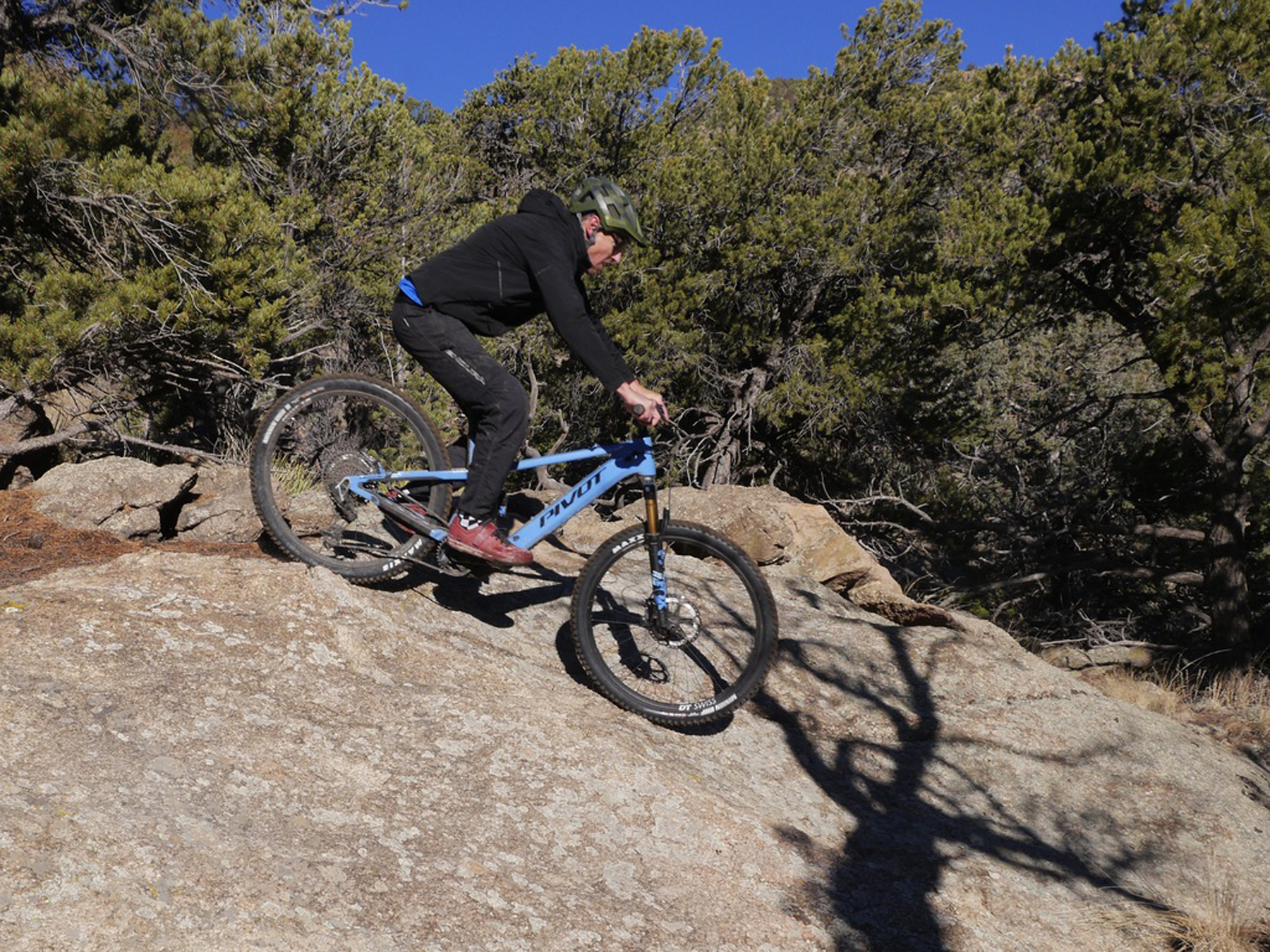
I typically get on well with Pivot’s implementations of DW-link suspension, and the Shuttle AM is no exception. I’ve talked about how well it manages the motor’s power, while also doing a nice job dealing with the drive system’s weight. There’s plenty of progression to handle the Shuttle AM’s 49 pounds during flat landings or high-speed G-outs, and I didn’t experience any harsh bottom-outs.
One of our questions in our First Look was “Will we miss the extra travel of the Shuttle LT” — and by and large, I haven’t. I’ll take that one step further and say that for 80% of the riding I did on the Shuttle AM, the answer is a flat “no.” The remaining 20%, where I did miss the extra travel of the Shuttle LT, and the added stiffness and precision of the Fox 38, was on steep, rutted, rocky, and blown-out moto trails. More specifically, a lot of those instances were when I made mistakes, and the Shuttle AM is, predictably, less forgiving of mistakes than longer-travel more Enduro-focused eMTBs, such as the Shuttle LT.
So the Shuttle AM descends very well, but where it truly shines is on trails that most of us ride most often — up, down, flat, punchy, techy, flow-y, good old mountain bike trails. Those more varied sorts of trails are where I really bonded with the Shuttle AM. I think it transitions really well between descending and climbing, and I love pumping through undulating terrain while tapping into its playful side with the Bosch motor’s Extended Boost contributing grin-inducing power wheelies pretty much everywhere.
The Build
We received the Shuttle AM v1 in the Pro X0 Eagle Transmission build. Pivot offers three builds, and the Pro XO build is in the middle price-wise. On paper, this build would be my choice, and after putting lots of miles on it, that is still the case.
SRAM’s T-Type drivetrains are a good match for eMTBs since they shift under load extremely well, and the loads are, of course, greater when there’s a motor involved. The XO Eagle Transmission was flawless on the Shuttle AM, reinforcing my preference for it on eMTBs.
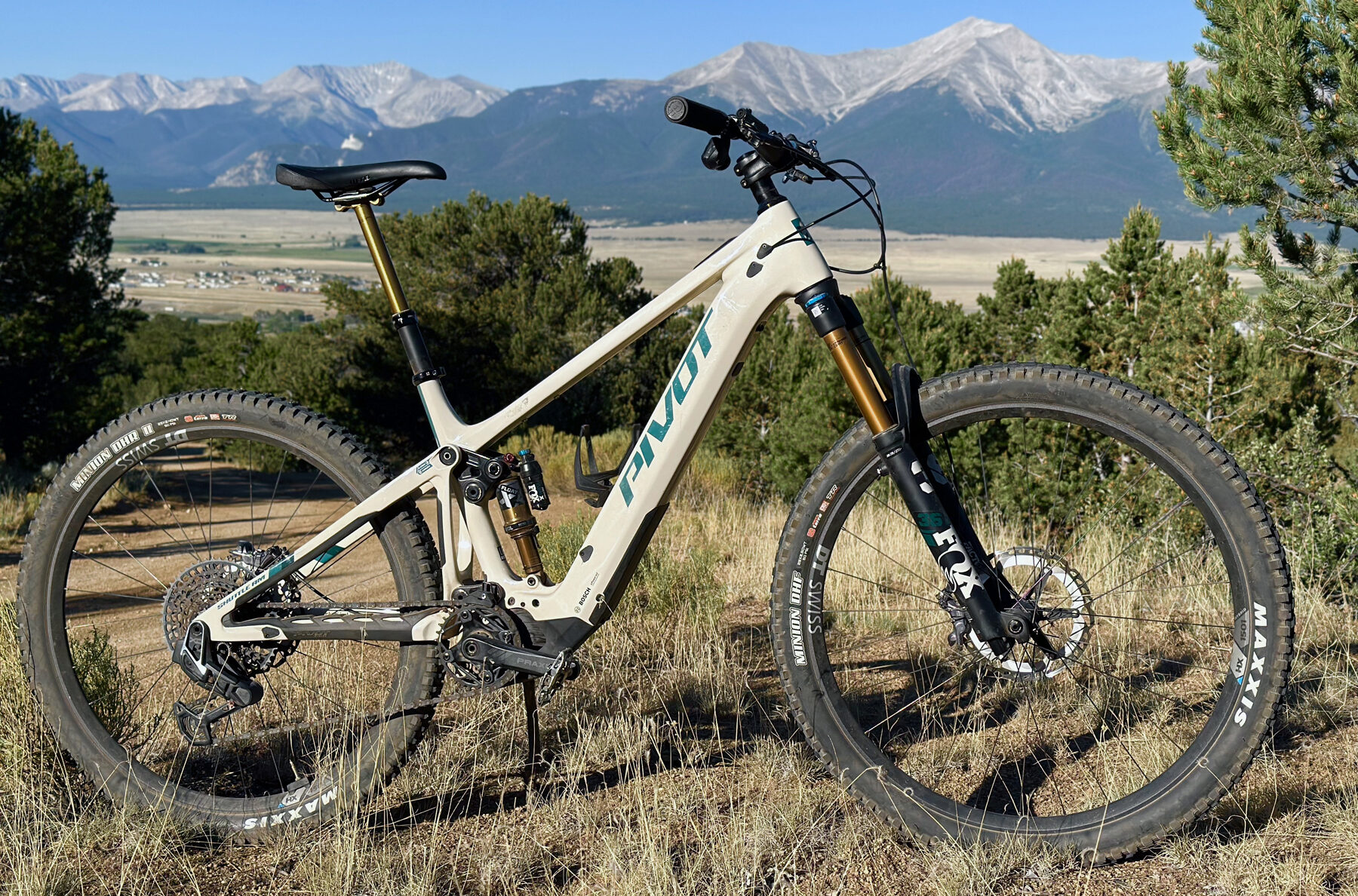
I mentioned in the Flash Review that it would be nice if Pivot spec’d the 200 mm Fox Transfer for the size Large, but I also understand why they didn’t, and it’s most likely something the dealer can swap at the time of purchase. When I put my measurements into Pivot’s dropper-post sizing guide indicates a 200 mm post will fit, so that would definitely be an upgrade I would pursue. And if I’m to be candid here, I would opt for a different seat post too, since the Fox Transfer Factory was sticky and unreliable throughout our time on the Shuttle AM.
[To be clear, we’re talking about the now prior-generation Transfer, not the just-updated new one; we’re hopeful the update solves the stickiness we’ve seen on a ton of prior-gen Transfers over the last couple of years, but haven’t yet gotten on one to find out.]
Pivot does condone converting the shuttle AM to a mullet. They recommend running the flip chip in the “high” position and using a 2.6” rear tire to maintain proper geometry. I generally enjoy mixed-wheel bikes and would’ve liked to have tried it in this configuration, but the Shuttle AM has 157 mm Super Boost rear axle spacing, and unfortunately, we didn’t have any 27.5’’ rear wheels with that fit.
While the Shuttle AM has fully internal cable routing with the Pivot Cable Port System, there was some fairly significant cable rattle, which was bad enough to send me unsuccessfully searching for the source. In hindsight, I should have contacted Pivot first because they informed me that they were indeed aware and had already made changes to the assembly process to remedy it. Hopefully, that’s sorted out going forward, but we haven’t been able to confirm.
Drive System and Range
(Editor’s note: We tested the Shuttle AM v1 with Bosch’s Gen 4 Performance Line CX drive system and 750 Wh battery. The Shuttle AM v2 Pro X0 Transmission comes with Bosch’s Gen 5 Performance Line CX Race Edition motor and 800 Wh battery.)
Pivot specs a Bosch Performance Line CX or CX-R drive system in the Shuttle AM. I’m a big fan of this motor, and go into detail on the specs, modes, display, and app support in the Santa Cruz Bullit Review.
With now over 1500 miles on Bosch Performance Line CX motors, we’re going to focus more on ride qualities, range, dependability/durability and generally what they are like to live with.
The CX motor is one of my favorites because I think it feels the smoothest of any full-power eMTB drive system I’ve tried to date in terms of power delivery. This is in comparison to competitor systems from brands like Shimano, Specialized, Yamaha, and Rocky Mountain. Since the CX motor is a full-power drive system, I’m not including lower-power lightweight motors.

Another aspect of the Bosch CX drive system where they have a leg up on the competition is the Extended Boost function, which provides continued motor assistance after you stop pedaling. Extended Boost is Bosch’s term for the feature; I’ve also seen it being referred to as motor run-on or sustained assistance. It is especially useful for getting through tricky technical areas where a full revolution of the cranks might not be possible. In these situations, often a back pedal followed by a half pedal stroke forward can provide enough assist to help clear an obstacle. It is also handy for getting and keeping the front end up in a power wheelie — for either getting through a technical area, or just hooning around having fun. Drive systems from other brands usually do have some degree of run-on — but Bosch seems to have the most (meaning it stays on longer), and the power doesn’t abruptly shut off at the end of the run-on, but instead tapers, which helps keep it smooth and controlled.
Our Shuttle AM (Pro XO build) is spec’d with the 750 Wh battery, which I find to strike a nice balance of capacity and weight. The Ride SLX/XT build comes with a 625 Wh battery. I have spent time on other eMTBs that have the Bosch Performance Line CX motor paired with the smaller 625 Wh battery, and for the type of riding I do I find it to be on the small side. The smaller battery dictates more attention be paid to battery management, resulting in more time spent in lower power modes — I prefer to ride in the highest power mode (Turbo) as much as possible, and the 750 Wh battery makes that possible.
Bosch does offer the PowerMore range extender which adds 250 Wh to the mix. I haven’t had the chance to try the PowerMore yet, but my guess is I would still prefer to start with the bigger 750 Wh battery. As far as charging goes, we only have experience with the 4 amp charger (Bosch also offers a 2 amp charger), which usually takes a little under 6 hours to bring it up to a full charge (from about 10% charge remaining) on the 750 Wh battery.
Bosch’s minimalist top tube display gets the job done, and I definitely prefer it over clunky handlebar mounted displays. But some other brands do the integrated top tube display a bit better, and I would like to see Bosch come out with a top tube display that has an actual screen instead of LEDs to convey just a touch more information. I’m not the kind of rider who needs tons of data, but I would welcome a little more so there isn’t a need to take out a smartphone, and connect via the app just to see actual battery charge percentage.
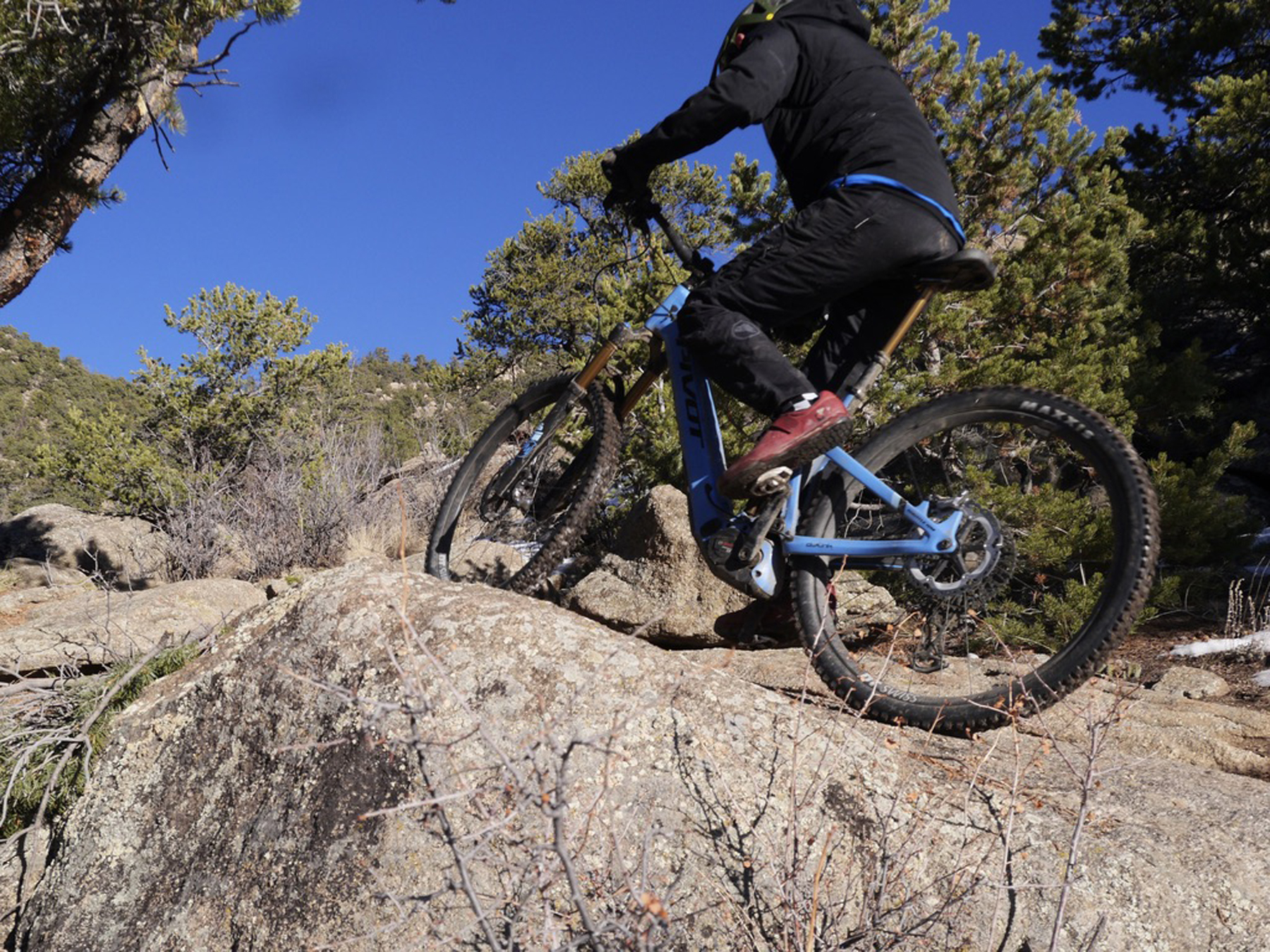
None of the Bosch drive systems in any of the bikes we have reviewed so far have required any service, and with over 2000 combined miles, that speaks to the quality and refinement of these drive systems. There have been some software updates, but they have all been handled seamlessly by the Bosch eBike Flow app.
Overall, the Bosch drive systems have been dead reliable, there’s been no issues with the motors, batteries, displays, remotes, or chargers. When talking to people about eMTBs, I recommend Bosch drive systems over all the others as I find the complete user experience to be the best.
Who’s It For?
The Shuttle AM has broad appeal, and l think a lot of folks looking for a well-rounded and versatile eMTB that can handle a wide variety of terrain should swing a test ride on the Shuttle AM. Riders who gravitate towards extremely challenging terrain are probably still better served with longer-travel more Enduro focused bikes, but for the rest of us, the Shuttle AM is a very compelling choice.
Bottom Line
Pivot has hit the bullseye with the Shuttle AM. It is one the most versatile all-round eMTBs I’ve been on — and it does this with an easy going personality that makes it so fun to live with.
One of the hallmarks of an all-round bike is to be good at everything, like a midfielder in football (soccer) — you don’t have to excel in any one area, but you have to play all the positions well, and that’s exactly what the Shuttle AM does.
Deep Dive Comparisons
BLISTER+ members and those who purchase our Digital Access Pass can check out our Deep Dive comparisons linked below. Get our Digital Access Pass to view all our Deep Dives and Flash Reviews, or become a BLISTER+ member today to get access to that and a LOT more, including the best worldwide Outdoor Injury Insurance, exclusive deals and discounts on skis, personalized gear recommendations from us, and much more.
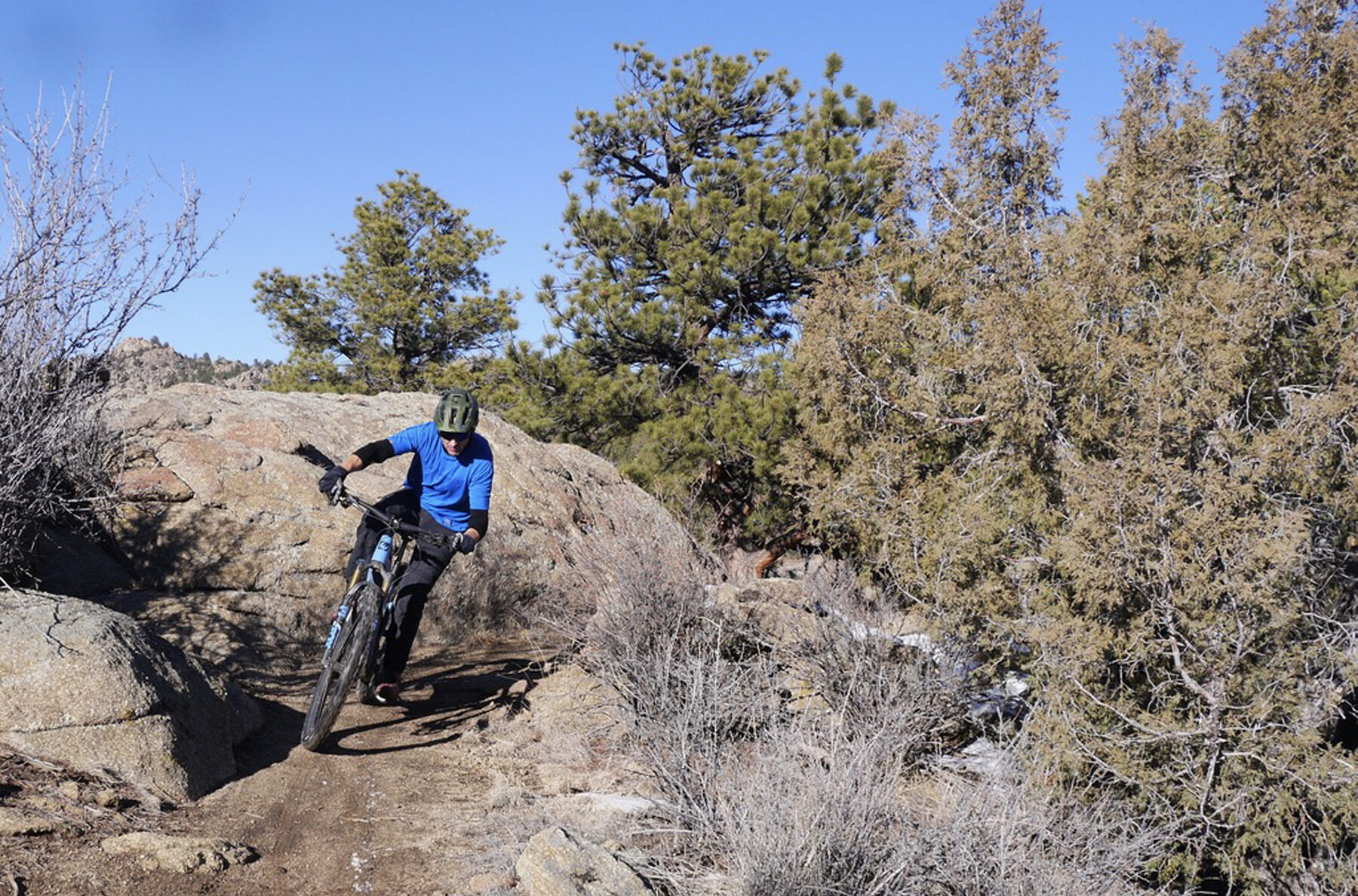
Deep Dive: Pivot Shuttle AM
We compare the Pivot Shuttle AM to the Pivot Shuttle LT, Orbea Wild, Specialized Turbo Levo, Devinci E-Troy and Rocky Mountain Instinct Powerplay.
Blister’s Flash Reviews and Deep Dives are accessible to those who purchase one of our paid subscriptions
To get our comprehensive Deep Dives and our initial, unfiltered reports on new gear, become a member and receive many other services, deals, and discounts.
If you’re already an active member, please log in.
(If you’re already logged in and a member in good standing and seeing this message in error, please refresh this page in your browser.)


Pivot makes truly astounding bikes. It’s too bad that Chris C’s ego results in them sticking with the silly Superboost rear spacing. SO many other brands have shown that it isn’t needed to combine good chainline, good rear tire clearance, and reasonable chainstay length……and carbon wheels have killed the “needed for stronger rear wheels” argument.
Awesome review of the Shuttle AM. I do own one and I can confirm everything you have written about it. You describe it perfectly.
what a fun all rounder machine, the best climber I have owned or tried, super light, precise. Great Stuff.